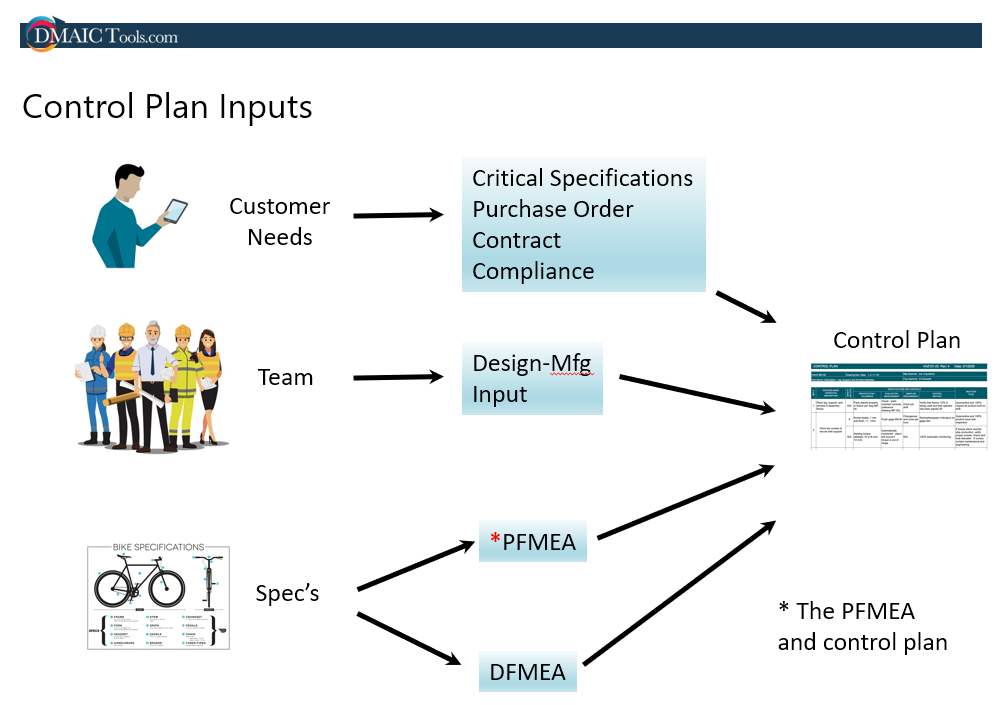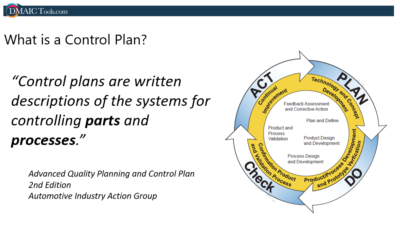In lean manufacturing, a control plan is a key tool used to ensure consistent quality and process control throughout the production cycle. It outlines the specific actions and measurements required to maintain quality standards, prevent defects, and minimize variation. The control plan is typically developed as part of the overall quality management system in a lean manufacturing environment.
Here are the key components typically included in a control plan:
- Process Steps: The control plan begins by listing all the process steps involved in manufacturing the product. Each step is described in detail, including the materials, equipment, and personnel involved.
- Process Controls: For each process step, the control plan specifies the controls in place to ensure that the step is executed correctly. These controls can include standard operating procedures (SOPs), work instructions, visual aids, checklists, and training programs for the operators.
- Key Characteristics: Key characteristics are the critical quality attributes of a product or process that significantly impact customer satisfaction or product performance. The control plan identifies these key characteristics and defines the acceptable tolerances or specifications for each one.
- Measurement Methods: The control plan outlines the specific measurement methods to be used for each key characteristic. This includes detailing the measuring equipment, techniques, and sampling plans. The measurement methods should be reliable, accurate, and capable of detecting any variations or defects.
- Frequency of Measurement: The control plan specifies how frequently measurements are taken for each key characteristic. This ensures that deviations from the desired specifications are detected in a timely manner. The frequency may vary based on the criticality of the characteristic and the associated risks.
- Response Plans: In the event of any deviation or non-conformance identified during the measurement process, the control plan includes predefined response plans. These plans outline the actions to be taken to address the issue, including stopping production, reworking the product, or initiating corrective actions.
- Escalation and Communication: The control plan defines the escalation process and communication channels for any quality issues or non-conformances. It ensures that the right personnel are informed promptly, allowing for quick resolution and preventing the production of defective products.
- Verification and Validation: The control plan includes provisions for verification and validation of the process controls and measurement systems. This involves periodic audits, inspections, or assessments to confirm that the controls are effective and reliable.
- Continuous Improvement: The control plan is not a static document; it should be continuously reviewed and updated based on feedback and improvement opportunities. It encourages a culture of continuous improvement by incorporating lessons learned and best practices into the control plan.
 (909) 987-1774
(909) 987-1774 Email Us
Email Us









